Abstract
Twenty-three (AC)n repeat markers from chromosome 16 were typed in the parents of the 40 CEPH (Centre d'Etude du Polymorphisme Humain) families. Where parents were informative, the entire families were then typed. There were seven markers in which null alleles were demonstrated, as recognized by the apparent noninheritance, by a sib, of a parental allele. Four of these markers showed a null allele in a single sibship, while in the other three at least 30% of the CEPH sibships were shown to have a null allele segregating. One null allele was sequenced and shown to be the result of an 8-bp deletion occurring within the priming sequence for PCR amplification of the (AC)n repeats. In gene mapping or in application to diagnosis, the presence of a segregating null allele will not corrupt the linkage data but could result in loss of information. In isolated instances a segregating null allele may be interpreted as nonpaternity. The presence of a null allele may generate misleading data when individuals are haplotyped to determine the presence of linkage disequilibrium with a disease gene.
Full text
PDF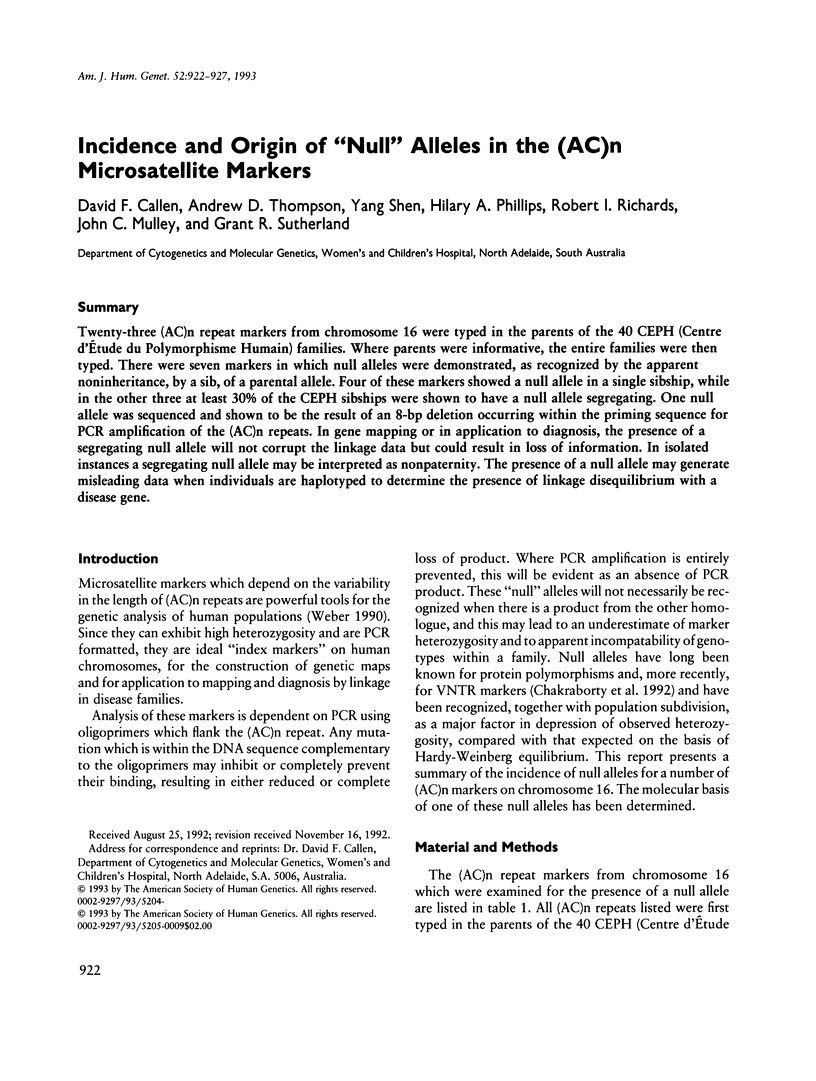
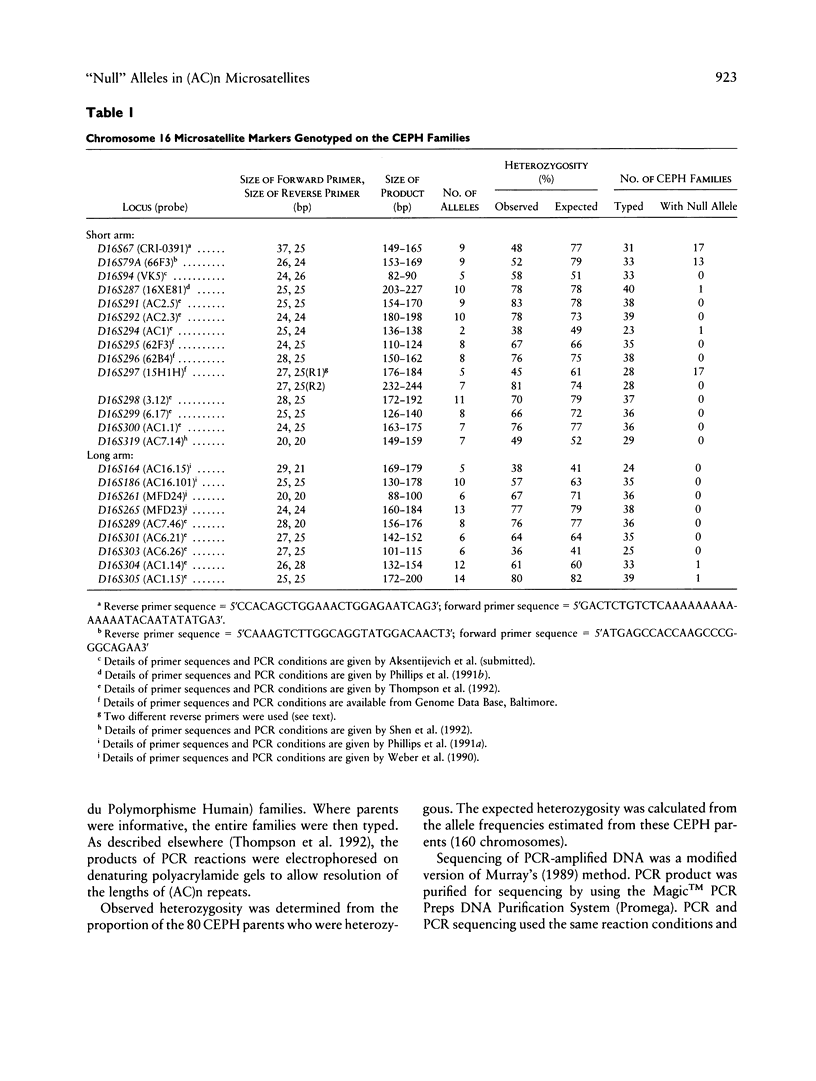
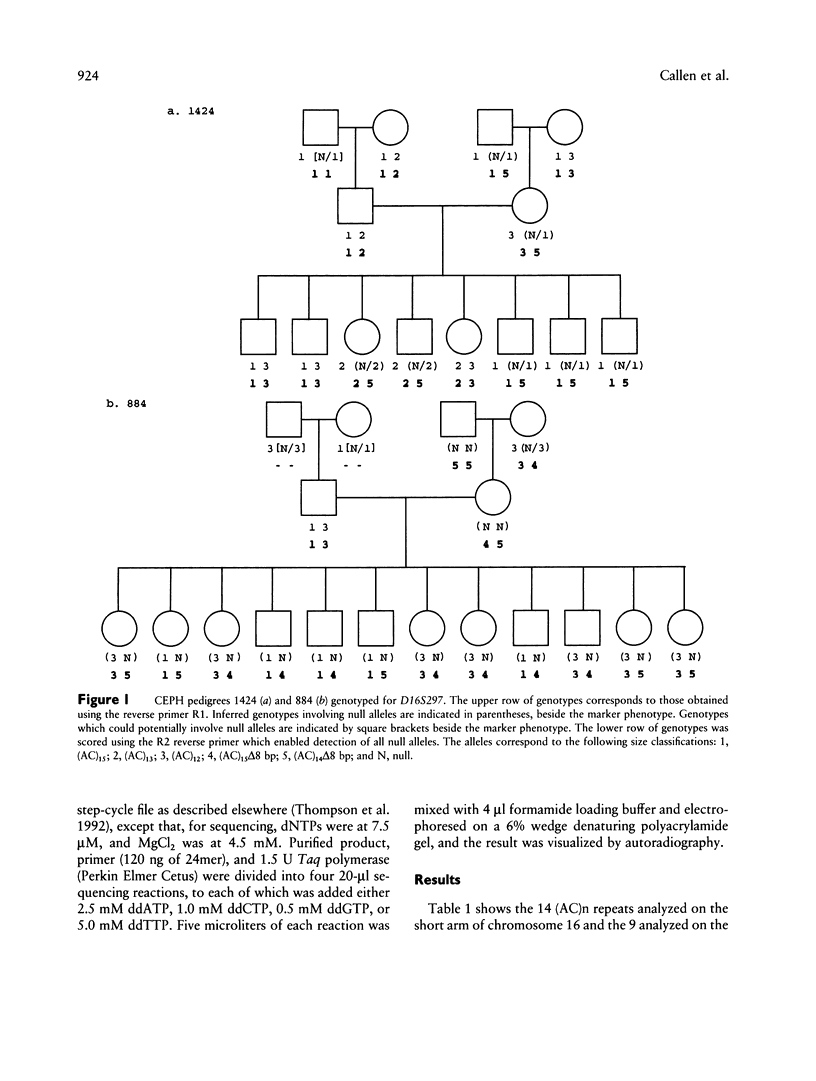
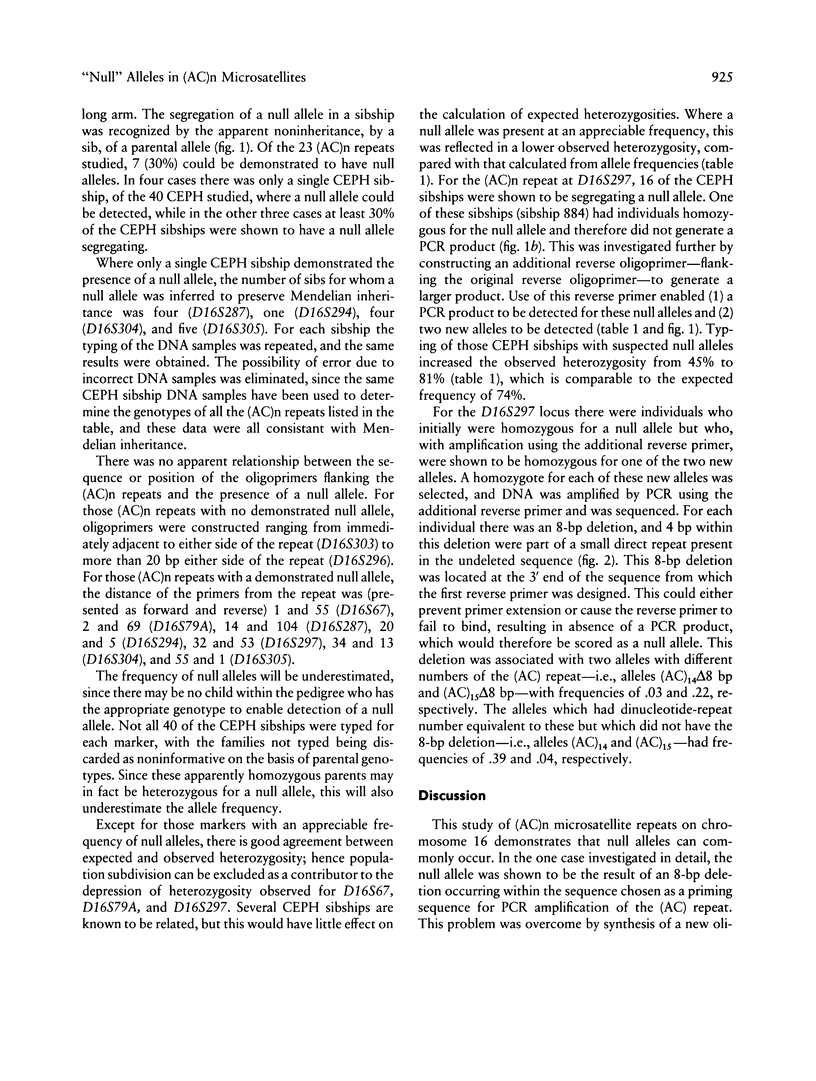
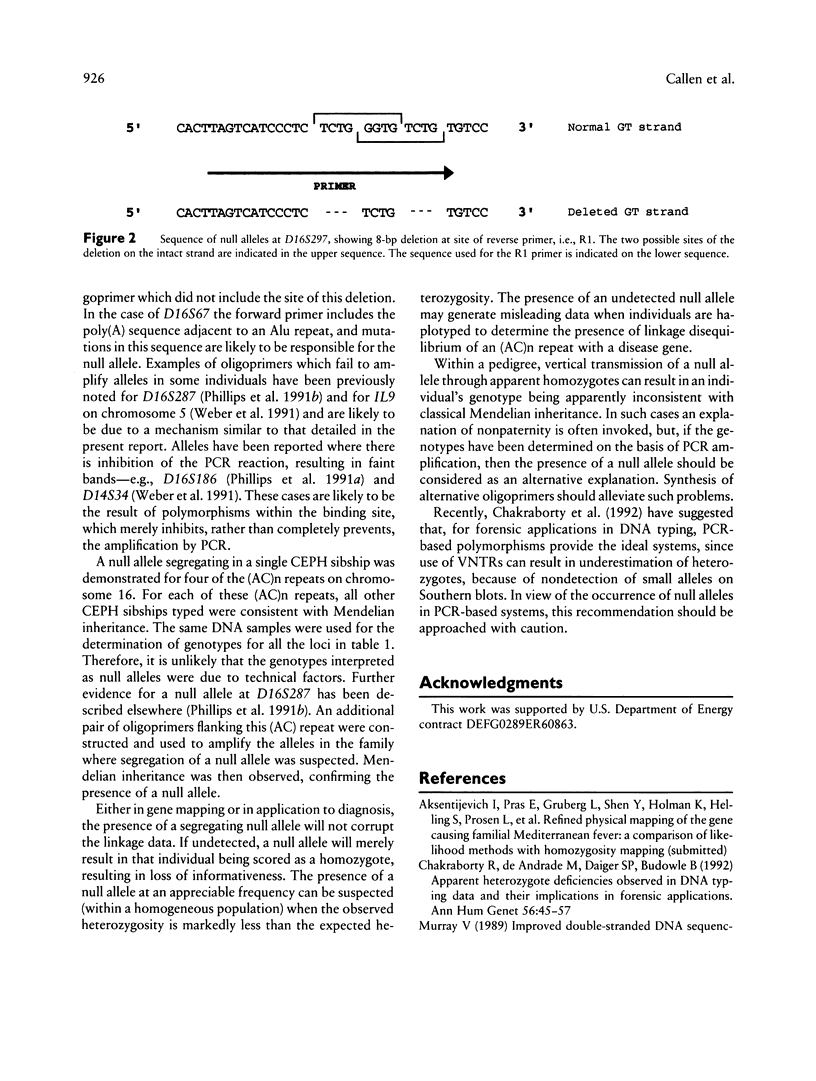
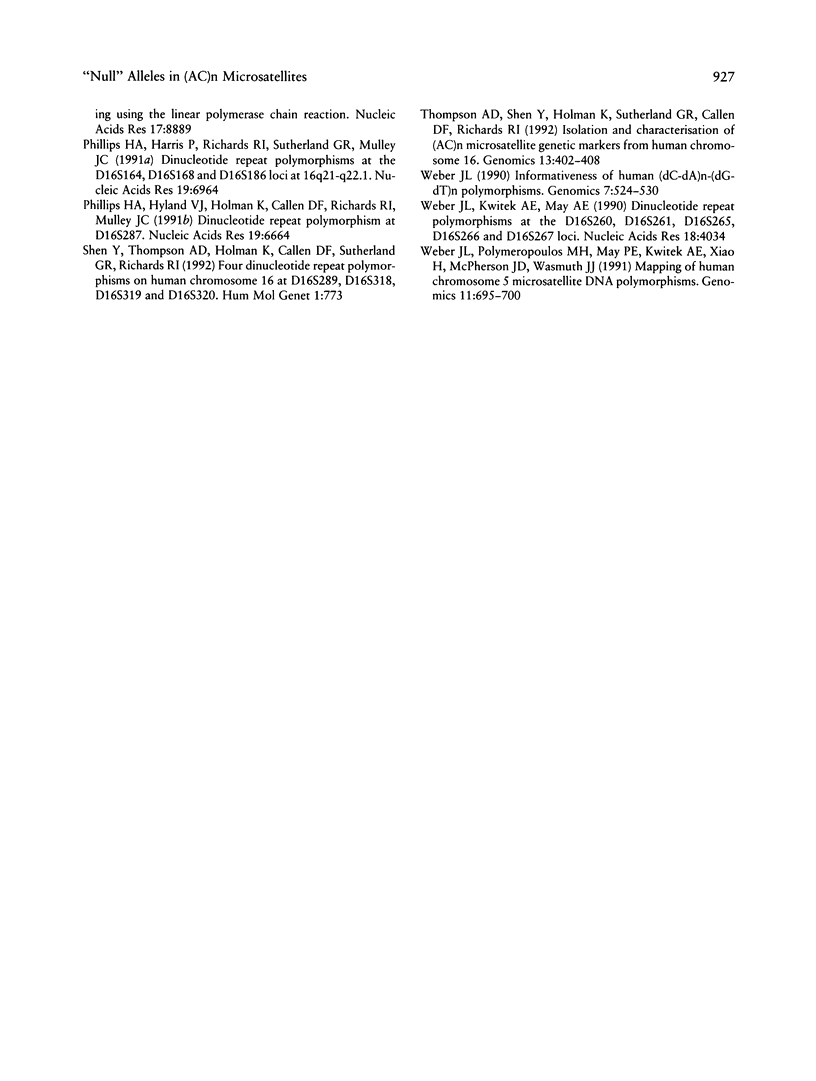
Selected References
These references are in PubMed. This may not be the complete list of references from this article.
- Chakraborty R., De Andrade M., Daiger S. P., Budowle B. Apparent heterozygote deficiencies observed in DNA typing data and their implications in forensic applications. Ann Hum Genet. 1992 Jan;56(Pt 1):45–57. doi: 10.1111/j.1469-1809.1992.tb01128.x. [DOI] [PubMed] [Google Scholar]
- Murray V. Improved double-stranded DNA sequencing using the linear polymerase chain reaction. Nucleic Acids Res. 1989 Nov 11;17(21):8889–8889. doi: 10.1093/nar/17.21.8889. [DOI] [PMC free article] [PubMed] [Google Scholar]
- Phillips H. A., Harris P., Richards R. I., Sutherland G. R., Mulley J. C. Dinucleotide repeat polymorphisms at the D16S164, D16S168 and D16S186 loci at 16q21-q22.1. Nucleic Acids Res. 1991 Dec 25;19(24):6964–6964. doi: 10.1093/nar/19.24.6964. [DOI] [PMC free article] [PubMed] [Google Scholar]
- Phillips H. A., Hyland V. J., Holman K., Callen D. F., Richards R. I., Mulley J. C. Dinucleotide repeat polymorphism at D16S287. Nucleic Acids Res. 1991 Dec 11;19(23):6664–6664. doi: 10.1093/nar/19.23.6664. [DOI] [PMC free article] [PubMed] [Google Scholar]
- Shen Y., Thompson A. T., Holman K., Callen D. F., Sutherland G. R., Richards R. I. Four dinucleotide repeat polymorphisms on human chromosome 16 at D16S289, D16S318, D16S319 and D16S320. Hum Mol Genet. 1992 Dec;1(9):773–773. doi: 10.1093/hmg/1.9.773. [DOI] [PubMed] [Google Scholar]
- Thompson A. D., Shen Y., Holman K., Sutherland G. R., Callen D. F., Richards R. I. Isolation and characterisation of (AC)n microsatellite genetic markers from human chromosome 16. Genomics. 1992 Jun;13(2):402–408. doi: 10.1016/0888-7543(92)90260-y. [DOI] [PubMed] [Google Scholar]
- Weber J. L. Informativeness of human (dC-dA)n.(dG-dT)n polymorphisms. Genomics. 1990 Aug;7(4):524–530. doi: 10.1016/0888-7543(90)90195-z. [DOI] [PubMed] [Google Scholar]
- Weber J. L., Kwitek A. E., May P. E. Dinucleotide repeat polymorphisms at the D16S260, D16S261, D16S265, D16S266, and D16S267 loci. Nucleic Acids Res. 1990 Jul 11;18(13):4034–4034. doi: 10.1093/nar/18.13.4034. [DOI] [PMC free article] [PubMed] [Google Scholar]
- Weber J. L., Polymeropoulos M. H., May P. E., Kwitek A. E., Xiao H., McPherson J. D., Wasmuth J. J. Mapping of human chromosome 5 microsatellite DNA polymorphisms. Genomics. 1991 Nov;11(3):695–700. doi: 10.1016/0888-7543(91)90077-r. [DOI] [PubMed] [Google Scholar]


